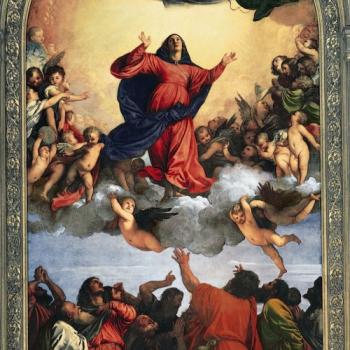We are pleased to present a second guest post by Leanne Ogasawara, who writes from Japan, where she is a freelance translator and writer.

When the German explorer Albert von Le Coq was at Kizil as part of his grand travels to “borrow” ancient artifacts in Central Asia (carving frescos right off the walls in some cases!), he was stunned to come upon cave temples in what was by that time the middle of nowhere with murals of such beauty that he described them to be “the finest in all of Turkestan.”
These murals were of astounding beauty. And most surprising of all was the blue pigment used in the paintings decorating the cave walls. He would write, “…the extravagant use of a brilliant blue – the well-known ultramarine which, in the time of Benvenuto Cellini was frequently employed by the Italian painters, and was bought at double its weight in gold.”
A color likened to the brilliant blue of the heavens above; as Le Coq explains, this ultramarine pigment was the same blue pigment so beloved by the Renaissance painters. How is it possible, he wondered, that the most expensive blue in the Renaissance painter’s palate was also to be found in this remote spot in Central Asia?
Made from ground up lapis lazuli, Victoria Finlay, in her book, Color: A Natural History of the Palette, begins her chapter on blue with these words: “One day many years ago somebody told me that all the true ultramarine paint in the world came from one mine in the heart of Asia.”
It’s true, it seems that all the ultramarine paint in the world was painstakingly derived from the lapis luzuli rocks mined from one place in northeast Afghanistan. Located not far from Bamiyan; from the Sar-e-sang mine in Afghanistan, donkeys transported the expensive pigment in rough sacks over an ocean of mountain ranges– East to Central Asia and beyond, and West to Venice and beyond.
In Europe, the precious pigment was so expensive that it was worth more than gold, and the legendary painters of the Renaissance were forced to wait till their patrons provided them the pigment before they could apply the heavenly blue to Mary’s robes (for by this time the color was symbolic of Mary).
Finlay says in today’s money, a pound would cost about $3,000.
The color is truly heavenly– just look at the Wilton Diptych— shown above. That is all lapis lazuli from Afghanistan. It is the same color blue that was used at Kizil in what is now Western China and the same color blue that was used in painting the great Buddhist statues that stood over the Bamiyan valley for 1400 years.
The Queen of Heaven
In Medieval Byzantium dark blue was the color reserved for an empress. It was also–along with gold–the costliest material of all and so was used in paintings of the Virgin Mary as an expression of devotion.The color became, therefore, a symbol of Mary, and this is where the term, la sacre bleu comes from too…
Cennino Cennini, in Il Libro dell’Arte, wrote that “Ultramarine blue is a color illustrious, beautiful and most perfect, beyond all other colors; one could not say anything about it, or do anything with it, that its quality would still not surpass.”
Even the great Michaelangelo was famously unable to finish his painting The Entombment because his promised shipment of ultramarine fell through.
In the East too, lapis luzuli was treasured. Called vairya in Sanskrit, lapis luzuli was one of the Seven Buddhist treasures (七宝)–along with gold, silver, pearls, agate, crystal, and coral. In Japanese, it is written 瑠璃. Ruri is also used as a girl’s name, signifying the beautiful gem-like quality of the color. In fact, one of the most beautiful women I ever met in my life had that heavenly name.
My own favorite blue is Huizong’s blue —that shimmering lavendar blue he longed to re-create in his imperial ceramic glazes–like “the the color of the sky, in early morning after a rainshower…” That blue was the blue that would become a kind of longing in people –existing more in people’s imaginations and hearts than anywhere else. But Cellini’s blue–that lapis luzuli blue from Bamiyan– is perhaps the most treasured blue of all times. It was, after all, a color to designate a celestial Queen.












